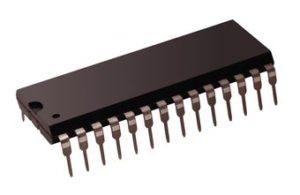
Over 75% of Americans now own smartphones, and around 90% of us are online.1 Nearly everyone is familiar with the desktop computers, laptops, smartphones, and tablets that we use everyday to communicate, to search for information, or just for entertainment. Not as obvious are the COMPUTERS-THAT-AREN’T-COMPUTERS-the microcontrollers, computers-on-a-chip, that are embedded in home appliances, toys, automobiles, exercise machines, portable hand tools, building control systems, industrial controls, commercial food equipment — just about everything.
A microcontroller is a small computer on a single integrated circuit, including the processor core, memory, and inputs and outputs to interface with physical devices. These can sometimes be Single Board Computers, but often the microcontroller term is used instead. Over 17 billion microcontrollers are shipped each year!2
DiMonte Group has been designing products for industrial and commercial clients for over 20 years. Now that we have added engineers with expertise in electronic hardware engineering and software, embedded microcontrollers are a growing part of our business. Here are some trends we’re capitalizing on to make better products for our customers:
NEW USER INTERFACES
Let’s say we’re designing a machine that goes into a restaurant to help prepare and serve food. Our industrial designers work out how to make the equipment attractive and easy to use. Our mechanical engineers design the electromechanical parts that do the heating, cooling, pouring, measuring, or mixing. Our electrical engineers design the circuitry that controls the mechanisms, and our software engineers write the code.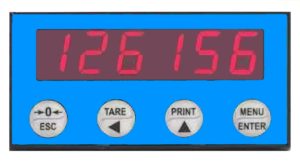
In the past, a typical piece of equipment might incorporate a membrane switch panel, and a 7-segment LED display. While this user interface works well for the most commonly-used functions, it quickly becomes awkward when setting up the equipment, or viewing error conditions.
One other important thing to remember about developing a user interface is that it is crucial that software testing is carried out to ensure everything is running smoothly. You can find a useful overview of webui test tools on the Parasoft website.
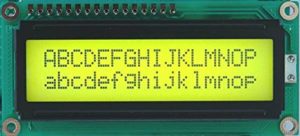 A step forward comes with monochrome alphanumeric liquid crystal displays. But these have low resolution, poor contrast, and a limited viewing angle.
A step forward comes with monochrome alphanumeric liquid crystal displays. But these have low resolution, poor contrast, and a limited viewing angle.
So why shouldn’t a new product, like those displayed by Dynatect and others, include a more attractive interface, like the display on a smartphone?
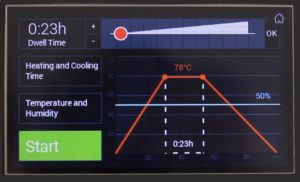
Full-color displays have come into the price range of the older monochrome devices. And while it used to be that you needed a Windows or Linux computer to drive a display like this, now there are inexpensive microcontrollers that can do the job. Also, there are tools to help build these interfaces without needing a top-heavy operating system in the target product, and without having to write a ton of custom software. So full-color displays are finding homes in a wide variety of commercial and industrial products, providing expressive and attractive graphical user interfaces. We can now display a great deal of information that was formerly impossible.
32-BIT MICROCONTROLLERS
In the past, the leading semiconductor companies making embedded microcontrollers had concentrated on proprietary cores-mostly 8-bit devices. Microchip, Texas Instruments, Motorola Semiconductor (which spun off and became Freescale, which then merged with NXP), and many other industry leaders made 8-bit chips.

With the advent of smartphones, a market emerged for processor chips that could drive small color displays. Volumes reached hundreds of millions a year. High-volume manufacturing of the displays in smartphones has driven down the costs for thin-film transistor (TFT) display technology, which makes possible high-resolution, full-color, high-contrast devices for lower-volume commercial and industrial products as well.
To handle the graphics-intensive processing requirements for these new displays, processors need to have graphics processing capabilities, while remaining power efficient. So if you’re looking to sell your processor for a more advances or updated version, you can visit HTTPS://WWW.EXITTECHNOLOGIES.COM/SELL/PROCESSORS/ for more.
ARM PROCESSORS FOR MOBILE
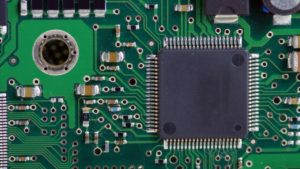
High-end, 64-bit processors from the ARM family power over 90% of the mobile device market, including Android phones made by Samsung and others, and iPhones from Apple-which use Apple-designed ARM derivatives.4 Through this licensing strategy, ARM effectively shares its development costs among many licensees, and the ARM platform has become the de facto industry standard in mobile
.
32-BIT EMBEDDED ARM PROCESSORS
For improved user interfaces to work for industrial and commercial products, new processors were needed. Legacy 8-bit microcontrollers didn’t have the ability to handle the graphics. At the other end of the scale, the 64-bit microprocessors and large banks of memory in smart phones were too expensive.
To address the embedded microcontroller market, ARM developed 32-bit ARM microcontrollers-the ARM Cortex M series. These microcontrollers share much of the technology of high-end ARM microprocessors, but are targeted at the single-chip microcontroller used in embedded systems. These processors offer the possibility of advanced user interfaces.
THE STM32 FAMILY

The largest European semiconductor manufacturer, STMicroelectronics provides one of the widest ranges of semiconductor devices, including power transistors, analog circuits, digital logic, solid-state sensors, radios, and microcontrollers. The STM32 family from ST implements ARM Cortex M technology, and ST has achieved a leading market position for 32-bit microcontrollers through these STM32 offerings.
The STM32 family includes over 800 variants. At the low end are the STM32F0 devices-entry-level parts based on the simplified ARM Cortex M0 core-which are typically available at price points very competitive with legacy 8-bit processors, while offering 32-bit performance. For example, the STM32F030F4P6 comes in a tiny 20-pin package, runs at 48 MHz, has 16K of flash (program memory) and 4K of RAM-suitable for a small LED display board, for example-and lists on the ST website for $0.39 each for 10K units.
Many of our recent projects use STM32F4 chips which provide clock rates at up to 180 MHz, digital signal processing capabilities, lots of inputs and outputs to control devices, serial data peripherals including USB, UART serial, CAN, I2C, and SPI, and program memory sizes up to 2 megabytes. Many STM32F4 devices can directly drive TFT displays, like the graphical display shown above. Even with these capabilities, these 32-bit single-chip microcontrollers have very reasonable costs. For example, the STM32F405ZGT6-144-pin package, 180 MHz, 1 megabyte flash, 192K RAM, rich I/O, TFT drive capable-lists for $6.66 in 10K quantity (ST website).
GETTING STARTED FASTER
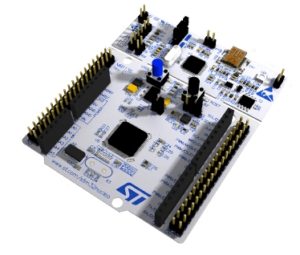 Often the EE hardware design process starts with a development board. The ST Nucleo series are boards used for building quick prototypes, very useful in the proof of concept stage. They also allow the software engineers to get started before a custom PCB board is complete. Nucleo boards are similar to the popular Arduino development boards-even directly supporting many Arduino shields-but have expanded I/O capabilities, and replace 8-bit processors with the STM32. There are over two dozen Nucleo variants available, matching the range of STM32 processors. Cost of a single Nucleo board ranges from $12 to $25, probably less than the bill of material cost if you were buying the parts one by one. According to the EE Times 2017 Embedded Markets Study, about 44% of developers started their design projects using a development board, and boards from ST were at the top of the list.5 Recently we have used Nucleo boards in the early design stages for a handheld radio terminal, an embedded Wi-Fi server, and a heating/cooling device for a medical instrument.
Often the EE hardware design process starts with a development board. The ST Nucleo series are boards used for building quick prototypes, very useful in the proof of concept stage. They also allow the software engineers to get started before a custom PCB board is complete. Nucleo boards are similar to the popular Arduino development boards-even directly supporting many Arduino shields-but have expanded I/O capabilities, and replace 8-bit processors with the STM32. There are over two dozen Nucleo variants available, matching the range of STM32 processors. Cost of a single Nucleo board ranges from $12 to $25, probably less than the bill of material cost if you were buying the parts one by one. According to the EE Times 2017 Embedded Markets Study, about 44% of developers started their design projects using a development board, and boards from ST were at the top of the list.5 Recently we have used Nucleo boards in the early design stages for a handheld radio terminal, an embedded Wi-Fi server, and a heating/cooling device for a medical instrument.
EFFICIENT SOFTWARE
ARM Cortex M processors are backed up by a wide range of available software, allowing developers to get a significant head start on the software development process. The STM32Cube package provides low-level support of I/O pins, clock tree, peripherals, and middleware, accelerating a quick start. The ARM organization offers additional software support. The EE Times 2017 Embedded Market Study found that in a typical embedded project, about 81% of the code was reused from in-house resources.6 An experienced development team is a very valuable asset!
CUSTOM CIRCUIT BOARDS
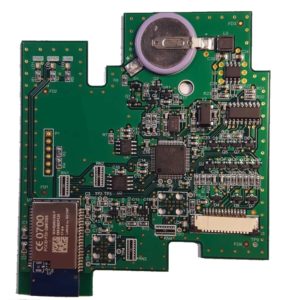 Whether it’s a handheld tool, a piece of exercise equipment, an industrial control, or any other microcontroller-based product, the end result of the design engineering process is very often a custom circuit board. As the product evolves, the electronic hardware has unique input and output requirements, and needs to fit into the product along with unique sets of electromechanical devices. According to the EE Times 2017 Embedded Market Study, in 19% of embedded system designs, the organization ended up purchasing off-the-shelf boards for the final product, while 81% of the projects resulted in custom boards.7 Most of our clients’ projects end up with custom boards, both for space and to reduce manufacturing costs.. Our hardware engineers have developed hundreds of custom boards for clients, using advanced CAD design tools.
Whether it’s a handheld tool, a piece of exercise equipment, an industrial control, or any other microcontroller-based product, the end result of the design engineering process is very often a custom circuit board. As the product evolves, the electronic hardware has unique input and output requirements, and needs to fit into the product along with unique sets of electromechanical devices. According to the EE Times 2017 Embedded Market Study, in 19% of embedded system designs, the organization ended up purchasing off-the-shelf boards for the final product, while 81% of the projects resulted in custom boards.7 Most of our clients’ projects end up with custom boards, both for space and to reduce manufacturing costs.. Our hardware engineers have developed hundreds of custom boards for clients, using advanced CAD design tools.
MICROCONTROLLERS AND IOT
The days of purely mechanical products are numbered. Almost everything has an embedded chip in it these days! The emerging Industrial Internet of Things (IIOT) is adding still more momentum, ensuring that embedded chips will reach still further beyond consumer devices into industrial and commercial products.
GOING TO WORK
The talent and experience of our industrial designers, mechanical engineers, electronic hardware engineers, and software developers are at your service for your next development project. Our expertise with STM32 microcontrollers from ST is one of our key assets.
Contact us today for a no-obligation conversation about your microcontroller application. We’re happy to help!
STM32 EXPERIENCE
At DiMonte Group, our electronic hardware and software engineers have experience putting STM32 microcontrollers to work for the following:
- Restaurant equipment
- Customized industrial controls
- Medical diagnostic devices
- Point of sale systems
- Election machines
- Industrial lighting systems
Some specific areas of expertise include:
- Communications protocols: USB, Ethernet, CAN, LIN, RS-232, RS-485.
- Wi-Fi, Bluetooth, 915 MHz, LoRa
- Error detection and correction, Reed Solomon and others
- Encryption, data compression
- Stepper motors, DC motors, brushless DC motors
- Peltier devices for heating/cooling
- Closed-loop temperature control
- HF RFID readers
REFERENCES
- 77% of Americans own a smartphone, 88% online in 2016: http://www.pewresearch.org/fact-tank/2017/01/12/evolution-of-technology/
- 19 billion microcontrollers a year: IC Insights, http://www.icinsights.com/news/bulletins/MCU-Market-Forecast-To-Reach-Record-High-Revenues-Through-2020/
- Heating and cooling time image: captured from a video on the EMBEDDED WIZARD website, https://www.embedded-wizard.de
- ARM market share in mobile, 2016: https://www.arm.com/-/…/Arm_SB_Q3_2017_Roadshow_Slides_Final.pdf?…la…, slide 16.
- EETimes 2017 Embedded Market Study, https://m.eet.com/media/1246048/2017-embedded-market-study.pdf, slide 32.
- 2017 Embedded Market Study, slide 34.
- 2017 Embedded Market Study, slide 31.
